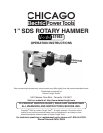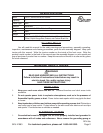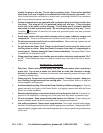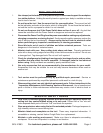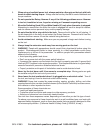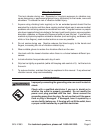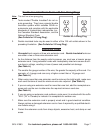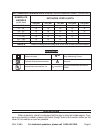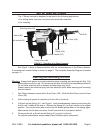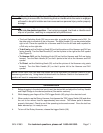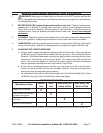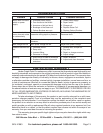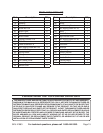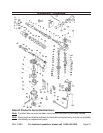Page 5SKU 41983
For technical questions, please call 1-800-444-3353.
When using a handheld power tool, always maintain a firm grip on the tool with both 5.
hands to resist starting torque. Always use the Auxiliary Handle to control kickback and
torque reactions.
Do not operate the Rotary Hammer if any of the following problems occur: Hammer 6.
is too hot, insulation is torn, frayed or missing or if excessive sparking occurs.
Move the Switching Knob (22) and Main Handle (91) only when the motor is stopped. 7.
Attempting to move either one while the motor is engaged will result in abrupt bit rotation,
and can cause serious personal injury and/or property damage.
Do not allow the bit to stop while in the hole. 8. Remove the bit while it is still rotating. If
the bit stops while in the hole, do not restart the Rotary Hammer. Remove the bit from the
Hammer and then remove it from the material being worked on.
Avoid unintentional starting. 9. Make sure you are prepared to begin work before turning
on the tool.
Always keep the extension cord away from moving parts on the tool.10.
WARNING! 11. People with pacemakers should consult their physician(s) before using this
product. Electromagnetic fields in close proximity to a heart pacemaker could cause
interference to or failure of the pacemaker. In addition, people with pacemakers should
adhere to the following:
• Avoid operating power tools alone.
• Don’t use a power tool with the power switch locked on.
• If powered via a power cord be certain that the tool is properly grounded. A ground fault
interrupt (GFCI) system is also a good precaution. This inexpensive device is a good safety
measure because it prevents a sustained electrical shock.
• Properly maintain and inspect all tools before use to avoid electrical shock.
Never lay the tool down until it has come to a complete stop. 12. Moving parts can grab
the surface and pull the tool out of your control.
Never leave the tool unattended when it is plugged into an electrical outlet. 13. Turn off
the tool, and unplug it from its electrical outlet before leaving.
WARNING! 14. Some dust created by power sanding, sawing, grinding, drilling, and other
construction activities, contain chemicals known (to the State of California) to cause cancer,
birth defects or other reproductive harm.
Some examples of these chemicals are:
• Lead from lead-based paints.
• Crystalline silica from bricks and cement or other masonry products.
• Arsenic and chromium from chemically treated lumber.
Your risk from these exposures varies, depending on how often you do this type of work.
To reduce your exposure to these chemicals: work in a well-ventilated area, and work with
approved safety equipment, such as those dust masks that are specially designed to filter
out microscopic particles. (California Health & Safety Code § 25249.5, et seq.)



